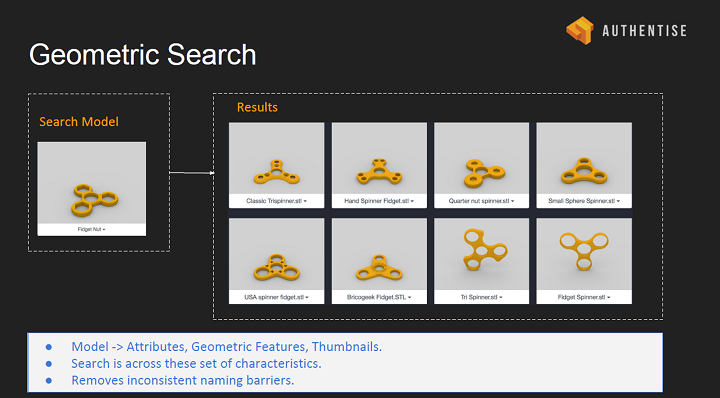Authentise Founder and CEO Andre Wegner will be participating in Additive Manufacturing Strategies 2022, Panel 2: Workflow and software for AM.
Additive Manufacturing has made many great strides over the years, yet it’s still inflicted with common issues. Intuitive data can deliver the needed solutions, but only if one shifts their focus. Instead of big data, think contextual data. Authentise has done just that for the last decade through its 3Diax and aMES platforms.
Contextual data is the end goal when it comes to workflow software and is defined as background information that gives a greater understanding of processes. To break that down further, it takes data used in Industry 4.0, such as sensor data, and data outside automated channels – such as operator data. Contextual data then aggregates those data points into the “context” of the part. This “context” can provide deeper insight into producing parts more efficiently.
Workflow software provides the means to collect and utilize contextual data as well as being central for the efficient running of your operations. Such systems (often referred to as Manufacturing Execution Systems or “MES” for short) offer many benefits, from increased Return on Investment to changing the flow of data in factories. In addition to these, more benefits are still being explored today. Such as the idea of connectivity- the interconnection of platforms, systems, and applications.
This is the opposite of Data Silos that still dominate the Industry 4.0 landscape. These are situations where the software doesn’t allow data transfers between departments or projects—making internal processes more complicated. In other words, it creates a massive waste of time for everyone involved. In additive manufacturing, where projects are unique and generally fast-paced, avoidable wasted time can cause unwanted issues. That’s where workflow software enters the picture.
Unfulfilled needs of Industry 4.0
Workflow software is essential for functioning properly in a high-mix, low-volume industry like Additive Manufacturing. For example, orders of similar parts are much easier to handle with shared data from past orders or other departments. Here contextual data can create closed data loops to counter any faced redundancy.
Now let’s dive into some specific functions that contextual data offers. First, we have real-time data tracking for users of the workflow software. This provides transparency for clients to check the progress of their projects, all with the benefit of completing the whole process on one comprehensive program. Which then allows for greater insight via local background data.
Representation of the aMES platform.
Two more unique features are Digital Benchmarking and Idea-to-Part.
Digital Benchmarking uses process data and automated data to determine the efficiency of system operations, as many project metrics cannot be determined (such as time taken till completion) by sensors alone. Benchmarking complements traditional data by running self-checks on metrics that may be unmonitored.
Idea-to-Part is the union of multiple modules to allow clients to enter design values. While taking the client through a series of optimizations that affect their order. In post-production, usage of manufacturing data feeds back to the design modules. This creates a closed-loop of data that allows for further design iteration, reduces time spent to design new products, the cost of initial failure, and determining quality early on.
Contextual data, agile manufacturing, and high mix, low volume industries mesh together nicely. With agile manufacturing, companies can maneuver ever-changing customer needs and wants. This requires flexibility other platforms, besides workflow software, can’t offer. Contextual data creates the foresight and path to make these alterations seamlessly. High mix, low volume industries like Additive Manufacturing must contend with fickle supply chains, customers, politics, and markets. As uncertainty rises, companies need more support to turn these trials into opportunities.
Now that the importance of workflow software and contextual data has been established, the next question to ask is who can offer a solution. The Authentise platform has done what is mentioned and more for many companies, from established companies like Boeing to start-ups getting their foot in the door. For Boeing, the aMES platform reduced the time it took to process an order by 80 percent while also decreasing build preparation time by 95 percent on average. This software creates an all-in-one process from part specifications to printing and finally delivery—all with the benefit of being transparent so clients can track their orders.
Workflow software, combined with the power of contextual data, will be the future of all things manufacturing.
